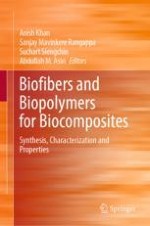2020 | OriginalPaper | Buchkapitel
Cellulose Based Bio Polymers: Synthesis, Functionalization and Applications in Heavy Metal Adsorption
verfasst von : Vijaykiran N. Narwade, Yasir Beeran Pottathara, Sumayya Begum, Rajendra S. Khairnar, Kashinath A. Bogle
Erschienen in: Biofibers and Biopolymers for Biocomposites
Aktivieren Sie unsere intelligente Suche, um passende Fachinhalte oder Patente zu finden.
Wählen Sie Textabschnitte aus um mit Künstlicher Intelligenz passenden Patente zu finden. powered by
Markieren Sie Textabschnitte, um KI-gestützt weitere passende Inhalte zu finden. powered by
